Eddie DeJong is my guest for this post. He is sharing his experience in Rwanda, where he learned about and helped a village to build sustainable keyhole gardens. This African gardening technique isn’t widely used in other parts of the world despite its clever water-saving design that also has composting built right in. Turning it over to Eddie to tell you more:
…..
Keyhole gardens:
- One of those buzzwords – keyhole garden – that seems to be taking over the gardening world.
- A circular raised bed with a central composting bin and a path to the center (a slice of the circle cut out) that originated in Africa.
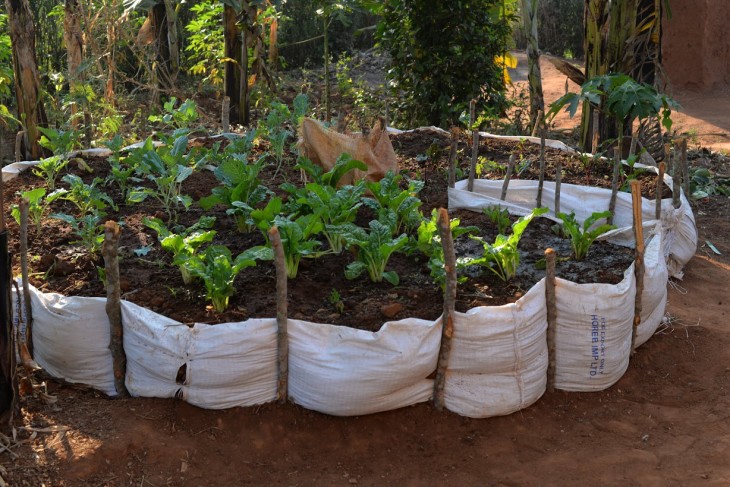
The whole keyhole garden concept came up quickly – like a whirlwind. I stumbled across the idea while researching new products back in the spring of 2014. It was an idea that seemed too good to be true. A keyhole garden is a single, compact unit designed to use less water – a composter and garden in the same vessel.
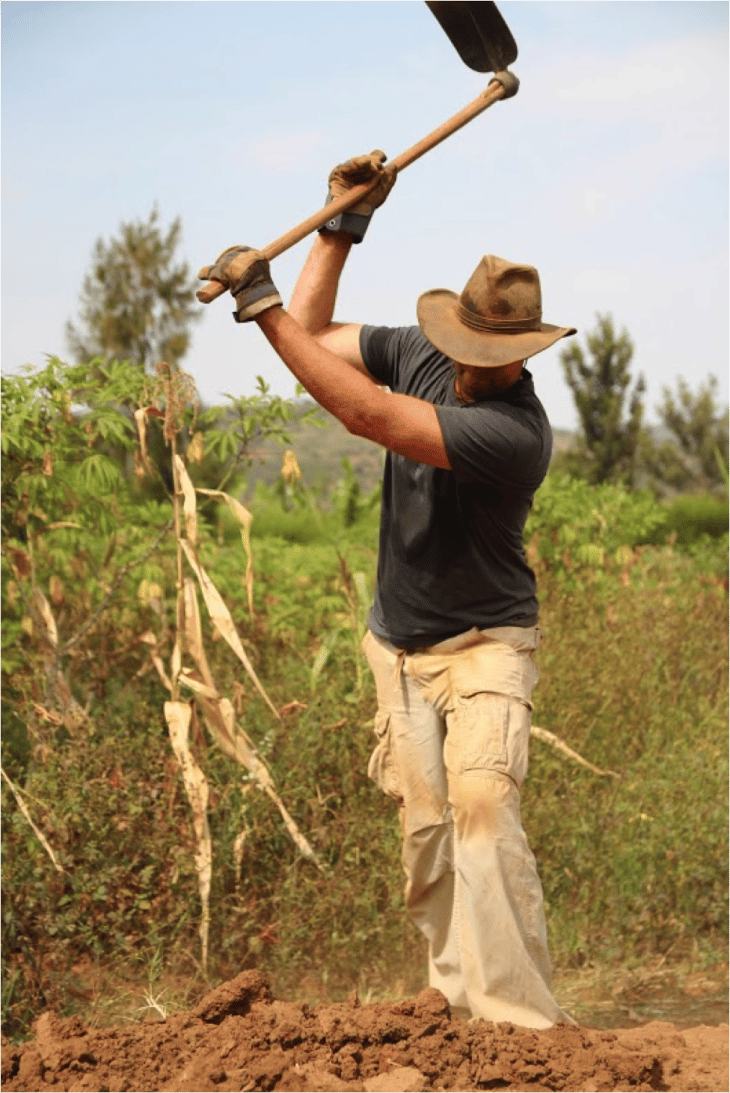
Before I knew it, I was hopping on a plane to build gardens for the African people out of thankfulness for giving us the great idea.
My wife and I wanted to “give back,” but by doing more than just writing a few checks. We wanted to be involved personally and physically on a long-term basis. Going to Rwanda would allow us to feel the heart – and heartbeat – of a nation and let it change our perspective.
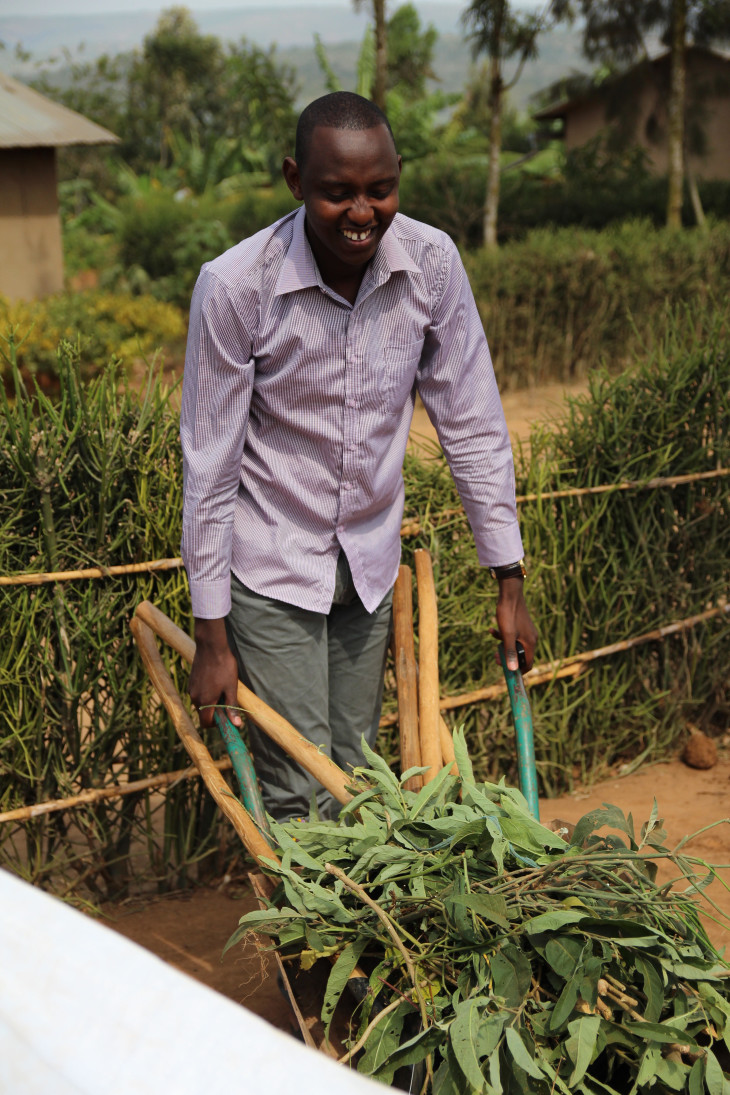
The Keyhole Garden Journey
The only thing I knew about Rwanda was something vague about genocide. I quickly learned that Rwanda is only 100 miles north of the equator and that Rwanda in July is just nuts.
The flight was brutal. We left Detroit at 6:00 pm, and arrived in Kigali, Rwanda, at 9:00 pm the following day, a full 20 hours of travel time. We had a stop in Amsterdam and then one more in Tanzania before touching down in Kigali. After sorting out our visas and paying a few tolls, we met with our driver and were whisked away.
Kigali – the capital city – was different from what I had imagined. I had assumed it would be quiet, shutting down for the night. Instead, it was bustling and busy. Kids yelled: Mazoon-goo!! (which means white person) and wanted to give us a high-five. There were nightclubs, music, and dancing. Speeding motorcycle-taxis scooted expertly in and out of traffic as we went up and down hilly roads until we arrived at the guest house where we spent the night.
The next morning revealed a beautiful cityscape. In the background, a few cranes surrounded new skyscrapers – a good sign in a big city. Cranes mean building, and building means economic expansion.
Putting things in perspective
After meeting the rest of the team and touring some of the facilities of the host organization, we went to the Rwanda Genocide Memorial. This put everything into perspective.
The memorial displayed a museum-quality timeline of how the genocide began and what events conspired to cause the culture of genocide to grow.
The timeline began with the Belgian colonists who ran the country and offered preferential treatment to the Tutsis, one of two major Rwandan tribes, until 1994, when it all came to a head. The museum also detailed a history of genocides after Rwanda, including Bosnia and Syria – a visual testament to inhumanity through the ages.
……
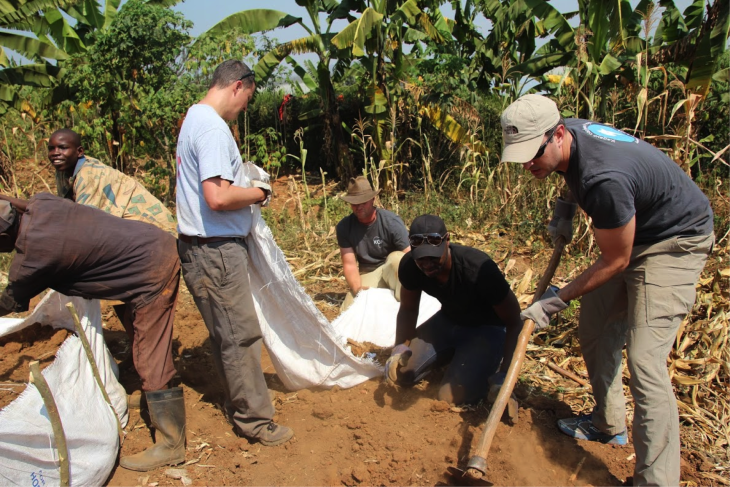
The Keyhole Garden Build Day
Build day presented its own set of challenges. Theo, our project manager, took us to a fresh keyhole garden built for training purposes. They used different materials than our kit back home, but the intent was to purchase local materials to support the local economy. This included stitched rice sacks for the structure, sticks for the framing, and available dirt for the soil. The dirt – oh my – the dirt.
The dirt was like concrete. It was sun-baked with a rock-hard crust since the last rainy season. The soil was rusty orange, and contained few nutrients. We first had to fracture the hard-pan, then lift it and pulverize it into something useable. After each blow, the dust would rise into the air attaching itself to my wet shirt and clothes. The dust went everywhere, into my nostrils and my lungs, into my shoes and permanently staining my pants. Close by a house was being built – out of bricks made from the identical soil that we were using! To make matters worse, we only had one wheelbarrow and a few old tools on the verge of breaking, so we ended up crafting a makeshift wheelbarrow out of canvas bags.
Keyhole Garden Layering to Improve Soil
Because the dirt had very few nutrients, we had to use a keyhole garden design layering method to help encourage the composting action that would provide nutrients for the garden. We used what we could find locally and sourced what we could from around the different properties. Many people grew bananas and corn, so there was an abundance of fallen corn stalks and banana tree leaves. We gathered these and created layers of material to make up the bed. The top two layers consisted of the orange clay-soil and then a final layer consisted of a sprinkling of local cow or sheep manure.
To kick-start the composting action, the entire bed needed to be soaked in water. Water was another big challenge in Rwanda.
Water is typically gathered in plastic jerry cans. Depending upon where they live, people travel an hour or more each way just to get a few jugs of water for the day. There were often lineups at the local water holes. Women balance the jerry cans on their heads. Older kids load up their bicycles with six or more cans and then push them home, often up steep hills.
Because obtaining water is so difficult and time-consuming, a keyhole garden design is desirable in Africa. The design uses up to 80 percent less water than a normal in-ground garden. Layers of spongy corn stalks and banana leaves absorb the moisture and help retain water.
A Mindset Shift
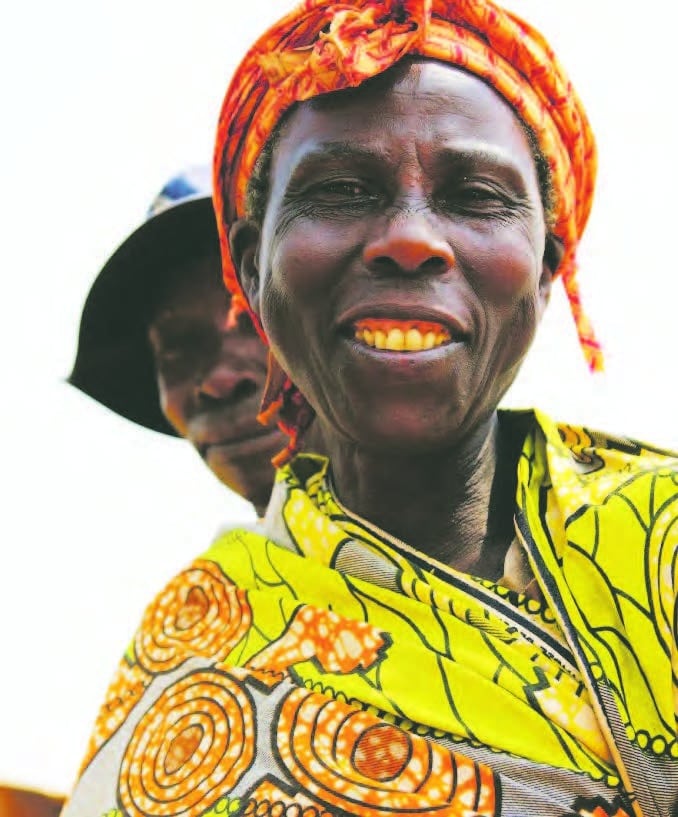
Rwanda has deep tribal roots, the two major tribes are the Tutsi and Hutu. Belgian colonialists controlled Rwanda in the early 1900s. They gave privilege to the Tutsi tribe and began the initial social class separation that ultimately led to the 1994 genocide. The Tutsi tribe were generally cattle ranchers and were considered the upper class, whereas the Hutus were considered lower class farmers.
In early 1994, Hutu extremists picked up traditional weapons and slaughtered the Tutsi over a period of 90 days. Within that time nearly 1,000,000 people were brutally murdered. The Hutus, who didn’t want to be involved, were forced to kill or be killed by the Hutu extremists. The Tutsi, whom were not murdered, escaped as refugees to neighboring Tanzania.
Returning refugees
A few years ago, Tanzania sent the Tutsi back to their home country, and the existing Rwandan government set up villages like Kigali to help settle the returning people.
The mindset of cattle ranchers was, however, still deeply engrained into the Tutsi culture, and when they returned to Rwanda, they had no means to get back to their previous occupation. No one wanted to garden or saw the importance of gardening. It was still seen as a lower-class occupation. As a result, health and nutrition have steadily declined in these communities, and their ability to earn a living has been severely curtailed.
Were I to be placed here in Kigali, here’s what I would immediately do: I’d plant avocado, mango, and banana trees. I’d grow corn and build a keyhole garden for greens like kale and spinach. I’d start a compost pile to start converting branches and waste into soil. I would use some of the produce to sell at the market and use my profits to purchase materials for a chicken coop.
North Americans often look at a neighbor’s new car or new landscaping and become envious. In the same way, some of the village members in Rwanda are looking at keyhole gardens. They’re seeing people get healthier, their eyesight improving, and their economic potential escalating.
Keyhole Gardens are Bringing Life
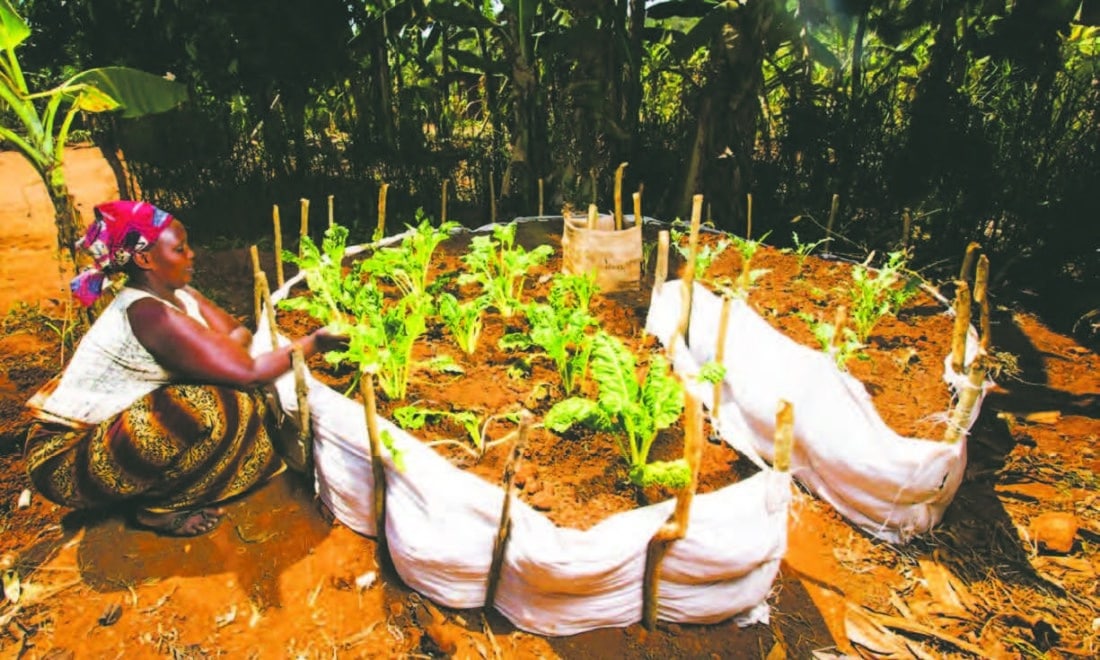
Rwanda left me breathless and speechless.
A 73-year-old woman who, after receiving a keyhole garden, reached out to the heavens in thankfulness as she danced around. I saw grown men with tears in their eyes, at a loss for words, wondering why we would travel halfway around the world to help them. I saw happier children than I usually see in North America, playing in community with each other. And I saw a 92-year-old man give thanks because he could finally see after I gave him my old prescription glasses.
I also stood in the small bullet-ridden buildings where thousands of people were raped and killed. With my own eyes, I saw the piles of bloodied, dirty clothes left behind. I stood in the mass graves, wondering how such evil could be allowed to flourish.
Rwanda is truly an example of a people who are rebounding. The same neighbors that once slaughtered each other have now locked arms to move forward, throwing hate behind. They have decided to move on through forgiveness.
Choosing Vita
Some say, “It’s the journey, not the destination,” but in this case, Rwanda is the journey for me. It is a journey to look outside my own challenges, a journey to inspire people through my example and a journey to help where I can.
Vita is the Latin word for Life. We brought vita to Rwanda through building keyhole gardens. In turn, Rwanda brought Vita to me.
I have found that to gain your life is by giving it away. I gave everything I could to Rwanda, but I came back with so much more.
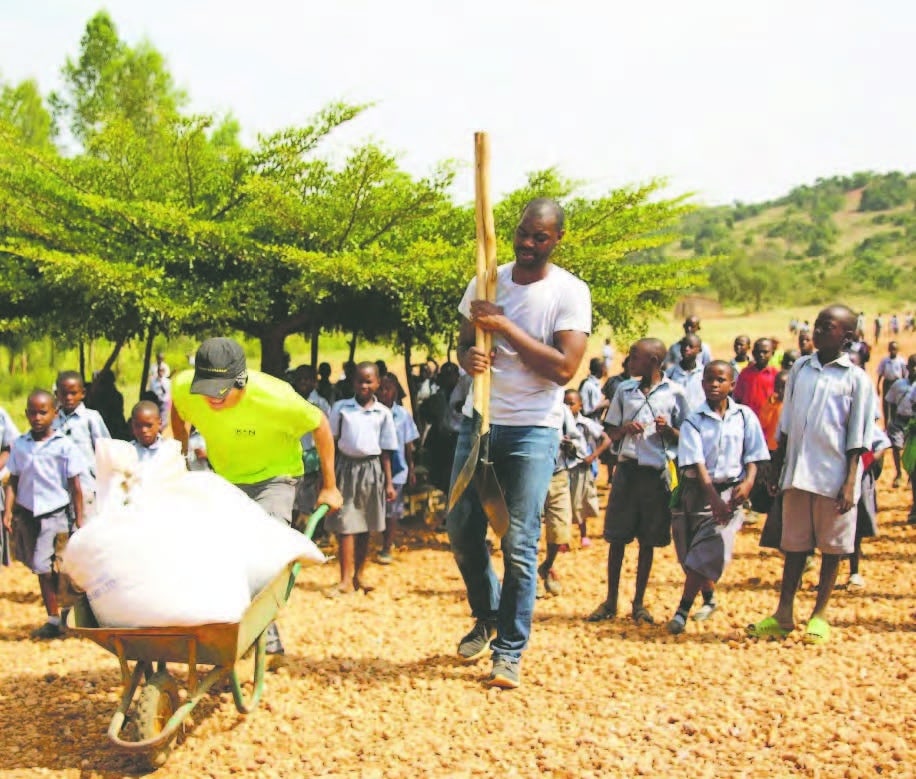
Eddie Dejong is the CDI (Chief Dreamer and Inventor) at Vita Gardens in Ontario, Canada. Vita Gardens manufactures and sells prebuilt keyhole garden kits in North America, as well as raised garden beds of various styles, including ADA wheelchair-accessible planters.
North Americans can purchase premade keyhole garden kits here. (USA)
Canadians can purchase Keyhole Garden Kits through Walmart Canada.
(the above are affiliate links)
by Eddie DeJong – Founder of Vita Gardens.
Some other African and Keyhole garden posts you might be interested in:
images: provided by Eddie DeJong, Tazz Kelly, and Esther Havens
+comments+